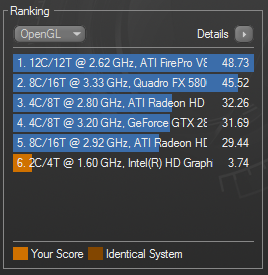Index

Review: A step in the right direction
Lo and behold, the first Asus ultrabook made an appearance in our Vienna lab and right from the start to have to say we are guilty of some misplaced criticism of Intel’s latest mobile platform.
We weren’t too thrilled with the entire concept and most of our criticism centered on the price. The Asus Zenbook UX21E is no exception. This 11.6-incher will set you back €999 in Euroland and you will probably agree it is no bargain by any measure.
However, the Zenbook is a pretty impressive piece of kit and we were pleasantly surprised by its performance and overall user experience. It packs a 1.6GHz Core i5 2467M processor, 4GB of RAM and a speedy 128GB drive, all of which help deliver surprising performance and system responsiveness.
The UX21E is available in two SKUs and today we will be looking at the slightly more affordable one. In case you are up for it, Asus will be more than happy to sell you a Core i7 powered version for €1199. However, the pricier version retains the same memory/storage configuration and we are really not sure whether it’s worth the extra 200 euro.
Mind you, the ultra low voltage Core i5 is no slouch. This Sandy Bridge based processor supports hyperthreading, packs 3MB of L3 cache, but most importantly it can hit 2.3GHz on Turbo. However, it was throttled down to 2.0GHz in the UX21E. The TDP stands at 17W, but bear in mind that the figure also includes Intel HD 3000 graphics, running anywhere between 350MHz and 1150MHz depending on load. Intel usually sells this part for $250, which makes the €999 price tag sound a bit more realistic.
In terms of costs, Asus also opted for a very fast 128GB SATA 6Gbps SSD from ADATA model ADATA XM11 128GB and it rides the fastest so far Sandforce controller. Such drives don’t come cheap and we can safely assume the drive ads about €100 to the price similar drives retail for roughly 1 euro per gigabyte.
This is not your ordinary 1.8-inch or 2.5-inch drive. It is an mSATA card which, in terms of dimensions, is closer to a DIMM module than your run of the mill hard drive. Speaking of which, the UX21E also lacks traditional memory modules. Instead, it has 4GB soldered onto the motherboard.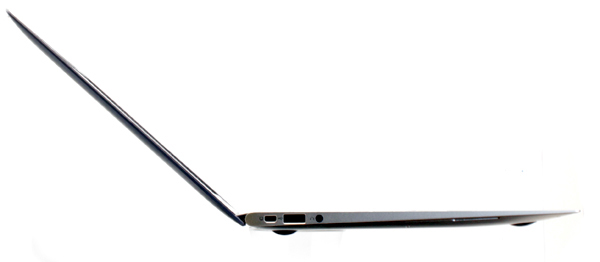
The end result of all this weight saving measures is impressive. The UX21E weighs in at just 1.15kg and it measures 299 x 196 x 17mm at its thickest point.
You might notice that it has a somewhat larger footprint than most11.6-inch devices and a relatively large bezel around the 1366 x 768 LED panel. This is quite normal for all ultrathin designs and we are talking about something like 10mm on each side, which doesn’t really make much of a difference.
Design and Build Quality
Obviously Asus took its design cues from Apple, but this is by no means a bad thing. It is also worth mentioning that Asus dabbled in ultrathin designs two years ago, using Intel’s now defunct CULV platform. The result was the UX30, a very stylish and thin 13-incher which spread some of much of its DNA to current Asus ultrabooks. Speaking of heritage, the UX30 also launched at €999.
The design of the UX21E is equally minimalistic, sleek and downright beautiful. The all-aluminium chassis looks right from every angle and it is by no means tacky. Asus manufactures the chassis from a single piece of aluminium and obviously the same goes for the lid. Since you can’t really change the SSD or add memory, there are no panels on the bottom, and there are no cooling vents either.
It all culminates in a very sturdy feeling chassis, despite the low weight. There is no flex on the keyboard and hardly any on the lid. The elegant, brushed finish feels great to the touch and it won’t get soiled by fingerprints unless you really have some personal hygiene issues, in which case you probably won’t mind anyway.
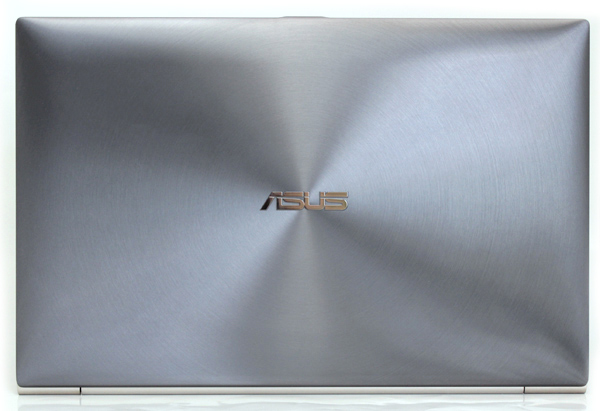
We also liked the understated chiclet keyboard design and even the screen hinge looks great. The same goes for the ever so slightly indented touchpad, which is spacious enough to accommodate multitouch gestures, which is not always the case on small notebooks. Thanks to great build quality, the palm rests feel very robust, despite the very thin design.
The lid is equally well designed and crafted. The extra large hinge feels like it will outlive all the hardware onboard the UX21E, maybe even some of its users. On top of the lid you will find a tiny lip that should help you open it, which tends to come in handy, especially if you hate smudging the lid with your hands. On uneven surfaces, you might have an issue with opening the lid, as the notebook is insanely thin but you will get used to pull the lid “the right way”. Apple has a somewhat different approach, instead of a lip on the lid, MacBook Air models have a small indentation on the chassis.
Asus chose to use a somewhat darker tone of grey for the display lid, which, along with a different brushed pattern, helps add some contrast to the overall design. There are no alternative colour options and this is pretty much true of all ultrabook designs we have seen to date. Although most manufacturers go for a neutral, silver finish, we would really like to see a bit more diversity. A lot of people would love to see black or dark grey designs, especially the crowd who would not like to be mistaken for Apple users from afar.

So, Asus has managed to catch up to Apple both in terms of design and build quality, but it still has some minor foibles. For example, the power adapter looks great and it is also quite practical thanks to a strap that will keep the cables in place. However, it still features a traditional power plug, which doesn’t come close to Apple’s (patented) MagSafe connectors. It’s not a matter of good looks, it’s just seems clever to have some sort of failsafe power connector on very light devices. In case you accidentally snag a MagSafe cable, it will simply snap out and live to fight another day. However, a traditional power cable could easily drag a very light laptop to the edge of the desk, resulting in a very expensive crash test.
Overall Asus did a very good job. Build quality is top notch, the design is mouthwatering and Asus paid a lot of attention to detail, making the UX21 a proper premium product.
Keyboard
As we said earlier, the keyboard is excellent. There is no flex and it does not feel cramped at all. This is where the somewhat larger footprint comes into play. The UX21E has a bit more room to spare than regular 11.6-inchers, so the palm rests are relatively large and comfortable.
However, the palm rests tends to sting your hands, and the edge of the chassis should be a bit rounder. We believe that this is an easy fix for Asus. After a while, you learn how to keep your arms on the palmrest to avoid the unpleasant feeling. The all-aluminium chassis feels very cold to the touch when you first start it up on a cold day. However, the low voltage hardware does not heat up too much even when you push it, which would make the UX21E a lot more uncomfortable.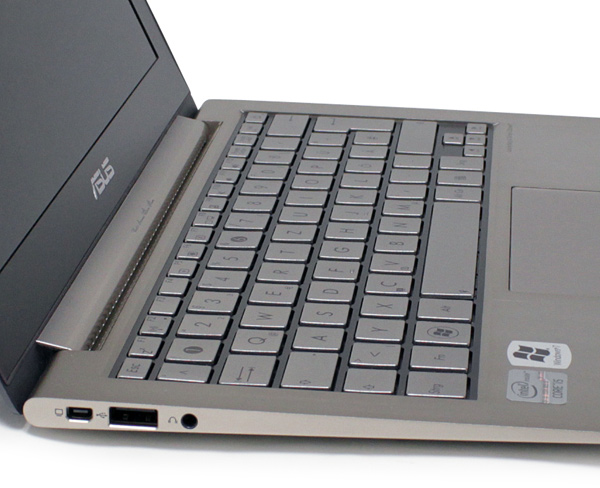
The power key is placed in the upper right corner, the place where you usually find the delete key, so we can imagine that at least in a first few days you might accidentally turn the machine off or send it into standby, instead of deleting something.
The layout is standard, not much to say here, other than to point out that this is a German keyboard, so the layout is somewhat different on US/UK models. Most users prefer full size Enter and Backspace keys, like the ones on our sample, but the English keyboard version sports a single column enter key. Just a small detail, but it’s worth mentioning.
Also, users who prefer soft, matte keys might object to the metallic finish. There is no LED backlighting, but it is a gimmick for show-offs anyway, so few users will miss it. You will need some time to get use to the keyboard, but this is true of every notebook. Once you get used to it, you will be able to type really fast, assuming that you can type fast to begin with.
Touchpad
The touchpad is pretty large for an 11.6-incher and it is roughly the size of the one used on Apple’s MacBook Air. There’s not much to complain about really, the touchpad works well and it offers plenty of space for multitouch. However, novice users will find themselves swiping it by accident while typing. It just feels very, very sensitive. Of course, sensitivity can be adjusted in software, but it won’t resolve the issue entirely. This takes some getting used to, as it is rather impractical to switch it off every single time some serious typing is involved.
The integrated buttons are pretty responsive and they feel sturdy, but they could be a bit more quiet.
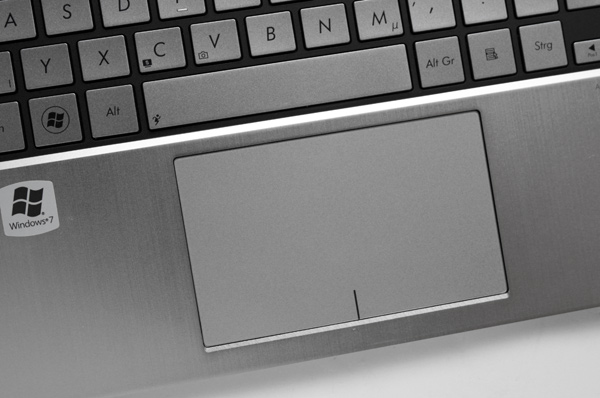
Ergonomics, Everyday Use
Here is where all the weight saving and over-engineering starts to make sense. The UX21 is a gorgeous piece of kit, but Asus did not skimp on practicality, either.
Understandably, the front and back feature no connectors. They are only supposed to look cool and they do.
The right side features a single USB 3.0 port, micro HDMI and AC in.
On the left you will find, USB 2.0, audio out and mini VGA.
Aside from the lack of many connectors usually found on notebooks, necessitated by the ultrathin design, there is not much to complain about. However, we would have preferred to see the USB 3.0 connector on the left, as it is more likely to be used for storage, i.e. have cables sticking out of it at some point.
The 1,366x768 screen is truly a sight to behold. We don’t we ever come across a better notebook panel. Blacks look great, yet there is plenty of brightness to go around. The result is excellent contrast. Colour definition is equally impressive, but viewing angles are just average. This is really a minor issue on such a compact device. The only real downside is Asus’ decision to use a glare panel, which is not a good choice for any ultraportable device.
It would be a pity to let such a screen go to waste with a pair of underpowered, tinny speakers. Asus sure seems to think so, that is why it developed an audio system with Bang & Olufsen. This is not just another marketing ploy, it really works and we were awe struck to hear it in action. Both in terms of sound quality and volume, this is easily the best ultraportable we have ever come across and it will even put much larger notebooks to shame.
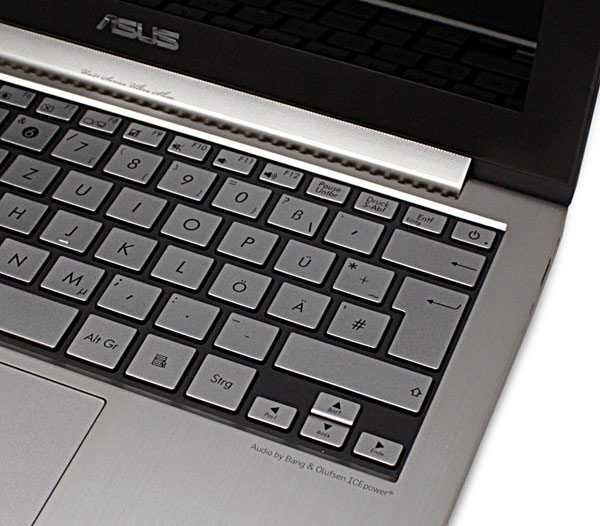
Like all ultrabooks, the UX21 does not feature a user-replaceable battery. Fortunately, the built-in 35Wh battery should suffice for most scenarios. Asus also provides a battery management application that displays relatively accurate battery life and standby time estimates.
We averaged almost 5 hours with an everyday workload, consisting of multi-tab browsing on WiFi, some Office applications and your standard messaging services, and the occasional YouTube video. It is a pretty good result, but battery life can easily drop below 4 hours if you push it. However, we reckon most users won’t buy an 11.6-inch ultraportable to run overly demanding applications anyway.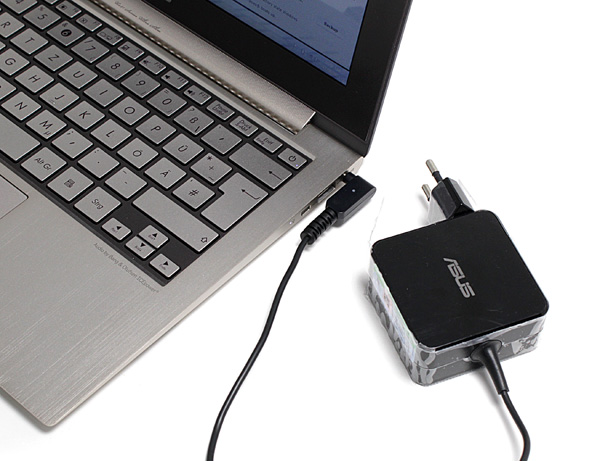
Asus provides its own battery tool that can give you an idea how much more battery you have left. The 5-hour average, easily drop to 2 and a half hours or less if you try playing games, but with video content it will average on 4.5, which is pretty good. The five hour mark should be possible to achieve with web browsing and office productivity mode will drop slightly below it.
Playing games on a 17W TDP chip with Intel integrated graphics might not be the best idea, but at least some older games and basic, casual games should run fine on this notebook. Gamers will be much better off getting something more serious, as €999 can get you quite decent GPU in much bigger and heavier notebook.
First thing you notice once you turn your PC on, is that it boots really fast. From the moment you push the power key, until Windows loads all programs, takes 15 or less seconds. We didn’t install too many things on Windows 7 Home Premium, but we can imagine that over time it gets slower.
One of the best things about ultrabooks is the instant on feature. The five hour battery also means that this notebook should idle in stand by for roughly a week. It takes a few seconds to get to idle mode and it takes less than two seconds to turn the machine on from stand by.
This is an extraordinary score and your machine will boot really fast. This cannot be said for the integrated camera that takes a bit more than 5 seconds to turn on, but this is something that you will have to learn to accept. Once it turns on, it works just fine, but the quality is average, not great.
Asus UX21 comes with a lot of Asus software and one of them is the updater that takes care of necessary and recommended driver and software updates. We updated our bios to the latest version but the bios software update tool is created in traditional Winbond, who don’t know how to make eye pleasing user interface. At least in one other case Asus bloatware will show its real, ugly user interface art, but this is a common issue for most PC manufacturers.
Asus also has Web space tool, and provides free 3GB space for UX21 users. We didn’t played with it much, but most people on Asus forums write that it’s quite slow and that Dropbox is a better alternative.
Let’s be realistic, most people who get this machine will either spend time on web, check emails or do some type of writing. Being equipped with Core i5 2467M processor clocked at 1.6GHz and Turbo support of 2.0GHz, your web pages will open really fast. This of course will be true if you have fast internet connection.
This CPU is fast, especially in combination with fast SSD, but we could not see the difference between i5 2467M and Alienware MX11 R3 powered by a Core i7 2517 that maxes out at 2.6GHz. No real noticeable difference in web browsing so getting a Core i7 based UX21 is probably a waste of money.
We were surprised that Wlan comes from Atheros and not from Intel, so you can kiss Intel Wireless display goodbye. This would be a nice to have, but we are sure that only a few people have it. Wlan worked just fine, was fast enough connecting at 130Mbits/sec on a test router.
Micro HDMI works just fine, and uses the same port as some phones but the 1366x768 resolution might not be optimal on some 1080p TVs.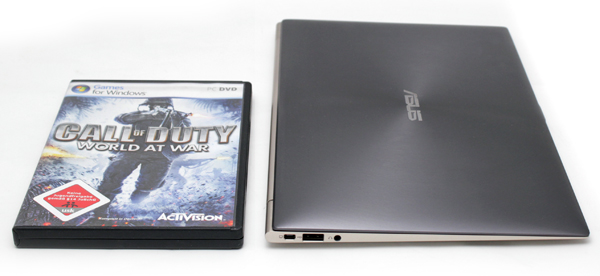
The box includes a power adapter, USB Ethernet adapter, mini-VGA to VGA adapter and a nicely designed pouch.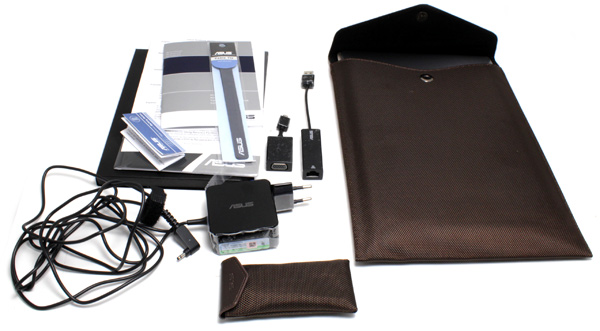
Performance
As you can imagine a part of 3Dmark we haven’t tried any games. 3Dmark 2011 won’t run as the graphics card is not DirectX 11 compatible, but 3Dmark 06 did run. We scored 1513 marks, nothing spectacular and even slower than dirt cheap AMD Brazos notebooks. The SM 2.0 score set to 510, HDR SM 3.0 scored 620 while CPU score is 1017.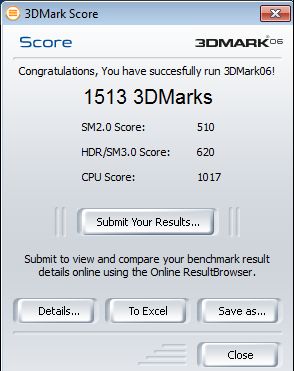
AS SSD test of ATADA XM11 showed that SandForce powered drive works really fast. Its seq read score stops at 472.83MB/s but its write score settles at 149.45MB/s. in comparison Alienware MX11 R3 powered with Samsung PM810 256GB drive scores 240.45MB/s read (2 times less than ADATA) but with 200.94MB/s has better writing capabilities.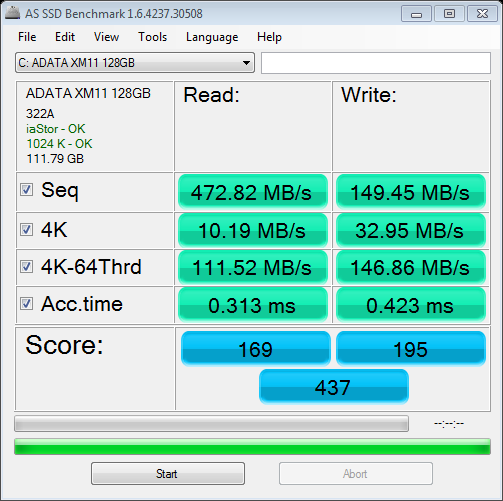
In Cinebench the UX21 scores 0.84 in CPU test and in OpenGL it scores 3.74 FPS. Alienware MX11 R3 scores 7.75 FPS in GPU test, courtesy of discrete Geforce 540M graphics. Naturally we don’t think that a hefty, 2kg 11.6-incher geared towards gamers is competition for the 1.15kg UX21, but we just wanted to give you something to compare it with. Alienware scores 2.4 pts in the same test.
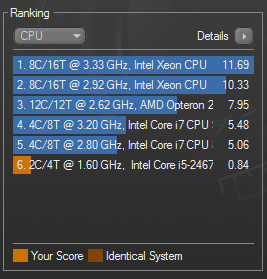
Conclusion
Frankly, we all laughed when we heard Intel’s price targets for ultrabooks. In theory ultrabooks are simply MacBook Air clones manufactured by Intel partners that are not as experienced with ultrathin and light machines as Apple. Well, the UX21E is quite a good machine. It comes with a 128GB SSD drive, it costs €200 more than the flagship 64GB iPad, but it is still a good 150 euro cheaper than a comparable MacBook Air with the same Core i5, 4GB of RAM and 128GB SSD.
For Intel and Asus, this is a step in right direction, but we cannot shake the feeling that we would like to get ultrabooks’s for a bit less money. Just remember that a few years ago ultraportables were selling for €2000 or more, so with that in mind, €999 is a good price. Much thicker machines, with HDDs and 2kg or more will cost probably half, but this would be comparing apples and oranges. Bear in mind that Intel’s goal is to cut ultrabook prices and hit a price target of €699 next year.
A machine powered with Windows 7 is still a better choice in terms of productivity than any tablet available to market, and the two-second start makes a big difference. We know the Ivy Bridge second generation of Ultrabooks will get better and Windows 8 will also help, but then again there will always be something better coming.
If you are looking for a very thin and stylish machine that can last a few hours, surf the web, play HD really fast and you want it to be extremely thin and light, we can strongly recommend the Asus UX21E.
Our European readers can grab one at Ditech, our tech shop around the corner which supplied us with the sample.

